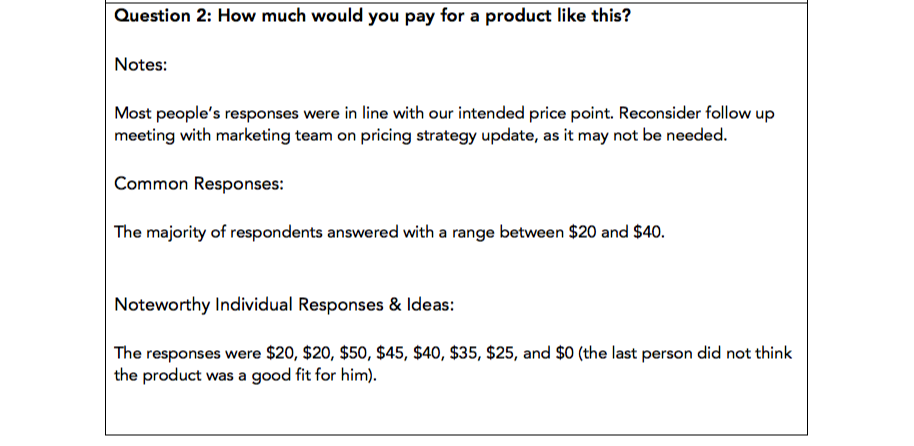- Like
- SHARE
- Digg
- Del
- Tumblr
- VKontakte
- Flattr
- Buffer
- Love This
- Save
- Odnoklassniki
- Meneame
- Blogger
- Amazon
- Yahoo Mail
- Gmail
- AOL
- Newsvine
- HackerNews
- Evernote
- MySpace
- Mail.ru
- Viadeo
- Line
- Comments
- Yummly
- SMS
- Viber
- Telegram
- JOIN
- Skype
- Facebook Messenger
- Kakao
- LiveJournal
- Yammer
- Edgar
- Fintel
- Mix
- Instapaper
- Copy Link
In an ideal world, you’d know just how your product or business idea would be perceived before it’s released. This knowledge could help you make alterations to what you’re offering for the best possible reception, and better inform your sales projections and marketing strategy.
Sadly, you’ll never know exactly how what you’re selling will be received by your target audience, which is why companies conduct market research.
But, while mass data collection through surveys provides you with necessary quantitative information, it doesn’t offer as much qualitative insight into your target market’s view or opinion of what you’re selling.
This is where a focus group comes in.
So, what is a focus group, and how can it help you navigate your market research? Let’s explore those two questions, next.
What is a focus group?
In the context of market research for businesses, a focus group is a cohort of individuals participating in a guided discussion about a business, brand, product, and/or service.
Typically, a focus group is facilitated by representatives from the business and is composed of individuals in the business’s target market who share their thoughts and opinions on the topic or offering in question.
What is the purpose of a focus group?
Focus groups enable you to conduct qualitative market research on a product, service, or overall brand image. They enable you to collect constructive feelings, opinions, or perspectives that can help you ensure your product or service is helpful to its target market, and that your marketing materials are persuasive.
A focus group is usually moderated by a representative or representatives of the company, who ask 5-10 questions to the participants over the course of 30-60 minutes, with another facilitator keeping notes on the focus group questionnaire.
Follow Along With a Free Focus Group Questionnaire Template

HubSpot’s Market Research Kit includes a questionnaire template to use in your focus groups, as well as four more templates to aid you in your market research efforts. You can download the kit here to help you plan your focus group and market research.
You can also read more about the process of conducting an effective focus group in our blog post, How to Run a Focus Group for Your Business.
Focus Group Size
A focus group can be anywhere from 3-15 participants, with many groups falling between five and eight participants. The size of your focus group depends on your company’s resources and intentions. For instance, the size may vary depending on whether you’d prefer a few in-depth opinions, or a broader range of perspectives.
Next, let’s explore the pros and cons of a focus group.
The Pros of a Focus Group
1. You get the story behind the data.
In focus groups, qualitative data takes center stage. Survey data is unbelievably powerful, but it’s hard to understand the rationale for the numbers without context. Focus groups are a way to understand how someone truly feels about your business and provide the why behind the data.
If someone answers a question in a way that interests you, you’ll have the chance to dig deeper. Ask “Why?” See how the other participants feel about the specific answer. Gauge facial expressions and tone of voice to see how people react to what you’re talking about. You’ll end up with the emotional input from your target market that your surveys may not be able to provide.
2. Focus groups are interactive.
Those responding to a survey or a questionnaire can’t pick up your products or use them, but they can in a focus group. If the subject of your focus group is tangible, observe and ask questions about how participants use the product and feel about the packaging and design.
Here, you’ll see your product through the end-users’ eyes, which can help you realize something you hadn’t before.
3. They’re more efficient than interviews.
Interviewing individuals can take much longer than running focus groups with the same amount of people. Say you want to interview 100 people, and each interview or focus group takes one hour. Getting the opinions of those 100 people would take 100 hours if interviewed, but only 20 hours if participants were broken up into groups of five.
This way, you can get qualitative feedback from multiple people in a shorter amount of time — an enormous time saver, especially if most of your participants think alike.
The Cons of a Focus Group
1. They’re not entirely representative.
What you gain from depth of opinion from focus groups, you lose in sample size.
Because focus groups take longer than surveys, you’ll hear from dozens or hundreds of people in more time than it could take you to hear from thousands of people through your own surveys or exploring secondary research, such as previously conducted studies or surveys.
This constricts the amount of people whose input you’ll receive, which means your findings may not represent the opinions of your entire target market.
2. They could encourage groupthink.
Have you ever been in a meeting where one or two people voice an idea you disagree with, but everyone else agrees with the idea before you have the chance to say your piece?
As a result, maybe you decide to go along with the idea … even though you’re not its biggest fan?
That’s called groupthink, and it happens when a group rallies behind a vocalized idea that not everyone believes is correct for the sake of moving on or attempting to avoid a conflict.
Focus groups can quickly turn into one or two participants providing the bulk of the answers while the other four or five silently nod in agreement. The problem is you’re now only getting input from two participants – not the entire focus group, as intended.
You can avoid this by calling on specific group members to answer in-depth, but some may be reluctant due to shyness or disinterest.
3. Your focus group moderators may have confirmation bias.
Focus group moderators are often attached to the project in question, and can come into the session with an idea of where they think it will — or want it to — go.
For example, one moderator may want a product to be priced, packaged, or colored a certain way, and can lead the discussion towards that conclusion. This is known as observer dependency.
For instance, let’s say one moderator wants a product to be colored blue, and poses the open question to the group: “What color should this be?”
After everyone responds — and no one says blue — she might ask, “What about blue, would that work?” Everyone silently nods, and she notes that the group agreed blue would be a good color, despite that being far from the perfect truth.
To overcome this, focus group moderators should be explicitly instructed to put their personal preferences aside and act as an objective group facilitator. You could also work with a market research firm, which typically has less interest in the product or subject than those from the business who are actually creating it.
Focus groups may not be the most efficient source of gathering data, but when used appropriately, they can put a face and an emotion behind the statistics and quantitative data you’ve gathered to better inform your business, marketing, and product development.
Remember, focus groups are most effective when moderators organize their thoughts ahead of time and take notes during the session on a focus group questionnaire — which you can access for free here in our Market Research Kit.
Originally published Nov 6, 2020 7:00:00 AM, updated November 06 2020
![what-is-a-focus-group-in-100-words-or-less-[+-pros-and-cons]](https://everythingflex.com/wp-content/uploads/2020/11/7242-what-is-a-focus-group-in-100-words-or-less-pros-and-cons.jpg-23keepProtocol)
![→ Download Now: Market Research Templates [Free Kit]](https://no-cache.hubspot.com/cta/default/53/6ba52ce7-bb69-4b63-965b-4ea21ba905da.png)


